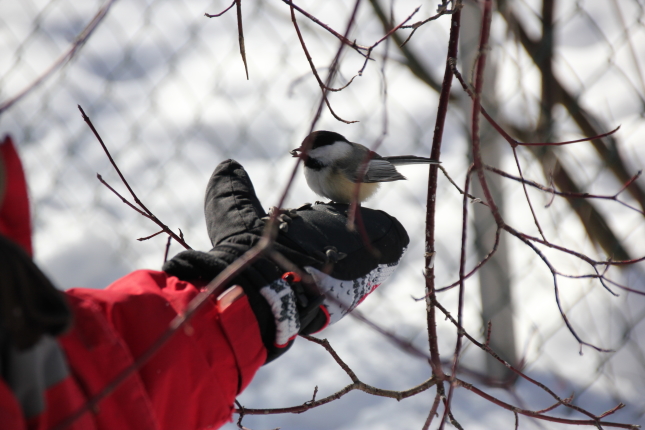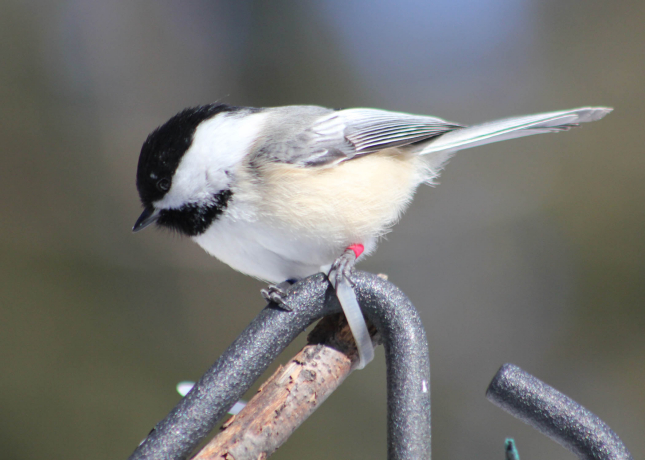Bird of the Month
Black-capped Chickadees
How can you not love the Black-capped Chickadee! A regular backyard visitor, vocal and curious.
Learn how to attract this wonderful bird to your back yard here!
Take part in our annual Chickadee Day - Sunday, February 25, 2018. Visit our events page for all the details.
Fun Chickadee Facts:
- Chickadees are found across much of North America. The more common species include the Black-capped, Carolina and Mountain Chickadees.
- Chickadees are easily identified by their namesake call “chick-a-dee.”
- The Black-capped generally sings out a “fee-bee” call while the Carolina sings “fee-bee fee-bay;” however, this song is learned and, in overlapping territories, may be learned from the “wrong” bird. Research has found that adult chickadees can have over 15 different vocalizations!
- Chickadee’s wing beats are about 27 times per second. This compares to a hummingbird’s 80 beats per second.
- The Black-capped Chickadee primarily eats insects during the breeding season with some seed and fruits. The non-breeding season finds them eating about half animal and half vegetable matter like seeds, spiders, insects, and even the fat from carrion. They visit feeders with seed like black oil sunflower, peanuts and suet regularly, especially during the winter months.

- Chestnut-backed and Black-capped Chickadees watch other birds’ foraging success to see if they should adapt their behavior to be more successful.
- Chickadees are generally monogamous, mating for life, although the female can visit another male if she is attracted by his song and dominance in the chickadee community.
- They are cavity nesters. They will excavate their own nest site in a rotten or decaying wood, use an old woodpecker hole or use a nesting box. (Mountain chickadee may not excavate its own hole and will nest under rock in a bank or in a hole in the ground.) They add a cozy nest on a moss base. They will also use nesting boxes in lieu of available natural cavity sites. Placing a layer of woodchips in the bottom of an appropriate sized nesting box can help entice them.
- Usually chickadees lay six to eight white eggs with a light reddish-brown speckling. They hatch in about 12 days and fledge about 21 days later.
- Research has shown that while chickadees are regular visitors to feeders, over 75 – 80% of their winter food supply still comes from natural sources.
- Chickadees are a tough little bird that do not migrate. During cold weather chickadees have been found to need twenty times more food than they do in summer.
- When the temperature falls below -12º C, research has shown that the survival rate of chickadees almost doubled when they had access to feeders. This resulted in an overall higher winter survival rate of 69% versus a 37% survival rate for populations without access to feeders.
- Chickadees have excellent coping tactics for surviving harsh winter weather. They cache foods and remember where they are hidden, have dense winter coats, diligently find excellent, well-insulated roosting cavities and can perform a regulated hypothermia to conserve energy overnight.
- Have you noticed how ravenously the birds eat at your bird feeders, especially first thing in the morning and just before dusk? Chickadees can gain as much as 10% of their body weight each day and lose it all again during a cold winter night.
- Chickadees weigh less than half an ounce.
- Longevity records for the Black-capped Chickadee are 12 years and 5 months.


